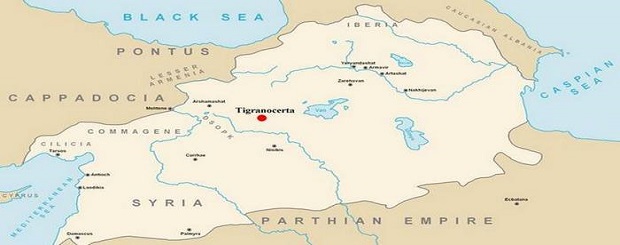
Art-A-Tsolum – Tigranakert – The Capital Of Armenia Under Tigran II The Great
July 8, 2020 – HISTORY – CULTURE:– Art-A-Tsolum – PREVIOUS ARTICLE:
The city of Tigranakert (Տիգրանակերտ) was built as the capital of Armenia by King Tigran II in 77 BC. Tigran was very fond of huge cities and built four cities named Tigranakert, as well as three cities named Tigranavan. Tigran believed that the power of the state depended on the grandeur of its cities.
The previous capital, Artashat founded by Artashes I, during the Armenian Empire became isolated from the main trade routes. Due to the new conquests of Tigran (from the Caspian Sea to southern Syria), the city found itself in the eastern corner of his vast territories.
Tigran wanted to build a new city. He suggested that the new luxurious city would be a symbol of New Armenia. According to the idea of Tigran, the city was to become the new center of Armenian culture and civilization. It would also serve as a symbol of the greatness and glorious victories of Tigran.
At the beginning of 70 BC, when Tigran’s empire was at the peak of its development, Tigran finally began the construction of the city of his dreams. The location of the city right in the center of the main trade routes of the ancient world was chosen after accurate calculations.
Tigranakert was located southwest of Lake Van, on the site of the modern city of Silvan near Diyarbakır (Turkey). Tigranakert was so large and important that the entire plain beginning from the southern slopes of Sasun and reaching the Tigris River and the city of Amid (modern Diyarbakir) was named in its honor.
The Tigranakert plain was densely populated by Armenians until 1915. But by that time, the city of Tigranakert itself had no longer existed. Only a small village with the name Manufarkin remained, and the only large city on the Tigranakert plain was Amid (Diyarbakır). In the latter, Armenians made up a significant part of the population until 1915. Thanks to their predominance in the city, local Armenians called the city of Diyarbakir “Tigranakert”.
The ancient capital Tigranakert was surrounded by huge, thick walls, about 25 meters in height. The numerous niches in the walls served as stables, closets, arms depots, and storage space for ammunition, food supplies, and other material supplies. The Royal Palace was on the outskirts of the city, surrounded by beautiful gardens.
The city was built in the Hellenistic style. To settle the city, the population of a number of cities from Mesopotamia, Cilicia, and especially Cappadocia – in particular, the Greek population of the city of Mazak (later Caesarea and Kayseri) – was forcibly moved into it.
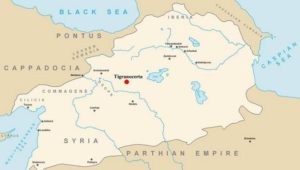
The beauty and wealth of the new capital of Armenia were comparable with those of the majestic cities of that time, like Babylon and Nineveh. Many people moved from Lesser Armenia and Cappadocia to Tigrankakert.
During the relatively short history of Tigranakert, the new capital reached a population of approximately 100,000 citizens. The city’s markets were filled with merchants. Tigranakert quickly became a key commercial, as well as cultural center of the Middle East.
Greek and Roman historians describing Lucullus’ campaigns in Armenia and the capture of Tigranakert provide detailed information about this new capital. According to Appian, Tigranakert was surrounded by a wall 50 cubits high and was so wide that horse stables were built into it. Not far from the city walls, outside, was the royal palace surrounded by hunting parks and fishing ponds. A strongly fortified castle was also built nearby.
In his “Annals”, Tacitus describes Tigranakert as “a city with many defenders and powerful walls. In addition, part of the city fortifications is bordered by the rather wide river of Nikephoros, and where its course does not provide reliable protection, huge moats have been dug.”
However, the city itself, in contrast with the ancient Nineveh or Babylon, was quite compact. Apparently, both in plan and in its trade & craft character, it was unlike the usual Hellenic cities of Asia Minor and Syria.
In his “Geography”, Strabo claims that Tigran resettled the inhabitants of twelve Greek cities to his capital, while Appian estimates the number of people resettled from Cappadocia and Cilicia to be 300 thousand.
Plutarch mentions that in addition to this, Tigran transferred the population of the areas of Adiabene, Assyria, and Corduene to Tigranakert: “He also removed the Arabs living in tents from their homes and lands and settled them near him in order to conduct trade through them.”
Plutarch adds that “it was a rich and beautiful city, each resident of which, whether he was a commoner or a man with a title, in imitation of the king sought in every possible way to expand and decorate it.”
Tigranakert did not flourish for long, however – in October 69 BC, it was destroyed by Roman troops led by Lucullus.
After the destruction of Tigranakert by the Romans, for some time, it still existed as a city. For example, it is known that in the 6th century AD, it bore the Greek name of Maritropol, and in the 7th-8th centuries, it was known under the Arabic Mayafarikin.
For centuries, this region remained the center of Armenian culture and resettlement – up until the Armenian Genocide in the Ottoman Empire in the late 19th and early 20th centuries when the local Armenian population was exterminated, exiled, or assimilated by the Turks and Kurds.
by Alexander Bakulin
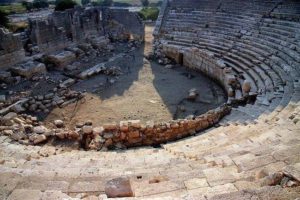
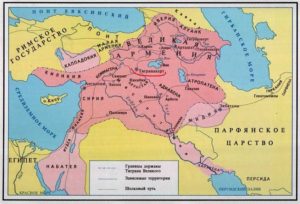
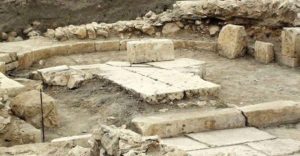

allinnet.info/news/tigranakert-the-capital-of-armenia/
